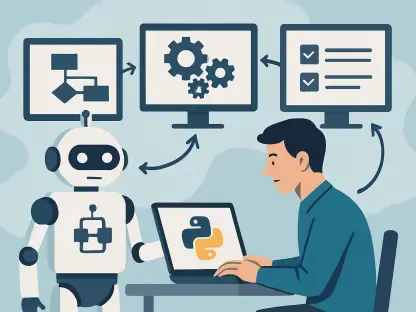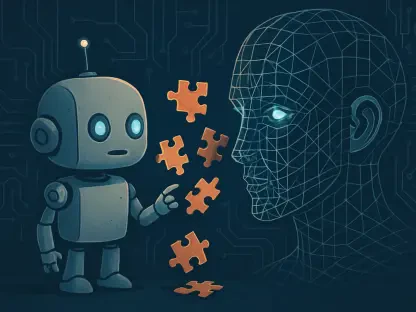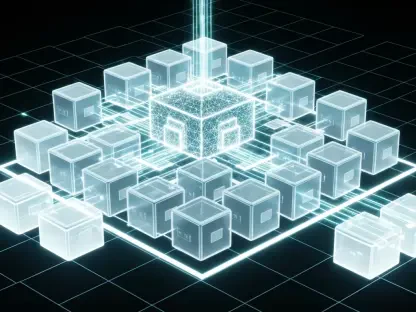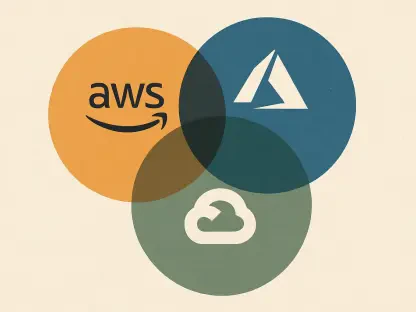In the realm of enterprise SaaS technology, Vijay Raina stands out as a thought leader in software design and architecture. With a deep understanding of platform engineering and continuous discovery, Vijay shares his insights on why integrating a thoughtful discovery phase in platform development is crucial for success. Through this conversation, he highlights essential strategies and practices that can help platform teams create tools that developers genuinely need and use.
What is the common issue platform teams face when building new tools?
A common pitfall is neglecting the discovery phase, which leads teams to build tools that developers never fully embrace. It’s not about the lack of technical skill but rather a misalignment with actual developer workflows. Teams often jump into building without fully understanding the pain points developers face, which results in tools that don’t address real issues.
How important is the discovery phase in platform development?
The discovery phase is absolutely critical. It sets the foundation for understanding the needs and challenges of developers. By engaging in discovery, platform teams can tailor their tools to fit seamlessly into developers’ daily routines, thereby increasing adoption and value.
Can you explain the concept of continuous discovery as mentioned by Teresa Torres?
Continuous discovery, as framed by Teresa Torres, involves maintaining ongoing touchpoints with users to validate ideas, challenge assumptions, and guide decisions. It’s about evolving the discovery process to be more iterative and in sync with the user’s environment, rather than relying on sporadic, intensive research efforts.
What are the benefits of practicing continuous discovery for platform teams?
Practicing continuous discovery allows platform teams to stay agile and responsive to developers’ evolving needs. It helps teams avoid building unnecessary tools, ensures they focus on solving actual problems, and boosts tool adoption by fitting effortlessly into existing workflows.
How is the practice of continuous discovery different in platform teams compared to product teams?
While product teams are accustomed to frequent user engagement, platform teams often default to relying on past experiences or established practices. Continuous discovery for platform teams emphasizes understanding internal developers as customers, requiring a shift from assuming needs to actively exploring them.
What problems can occur if platform teams skip the discovery phase?
Skipping this phase often results in tools that are underutilized or completely abandoned. Without discovery, teams might solve non-existent problems, leading to wasted resources and tools that add friction rather than alleviate it for developers.
How does treating internal developers as customers benefit platform teams?
This approach fosters a customer-oriented mindset, allowing platform teams to tailor their innovations towards meaningful impact. By considering internal developers as customers, teams gain valuable insights into how their tools might fit into or disrupt existing workflows.
What are some ways continuous discovery can help platform teams?
Continuous discovery aids platform teams in identifying genuine barriers faced by developers. It uncovers hidden problems, helps make more informed decisions with limited resources, and assists in crafting tools that integrate naturally into everyday development activities.
How do you ensure the tools developed fit into developers’ workflows?
By engaging with developers early and often, we align get with their real-world context and challenges. Assumption mapping, open collaboration, and transparency throughout the process allow us to tailor tools that not only solve problems but enhance workflow efficiency.
What indicators do you look for to assess the adoption and effectiveness of a platform tool?
We examine usage patterns, looking for high adoption with minimal friction. Indicators like ease of use, absence of workarounds, and the frequency of context-switching help evaluate whether a tool naturally integrates with existing workflows or introduces hurdles.
How do you gather data to evaluate the success of the tools you build?
We employ both quantitative metrics, like usage patterns and help requests, and qualitative feedback through regular developer interviews. Gathering this data helps us paint a complete picture of a tool’s integration and efficacy within teams.
Why is regular feedback essential in continuous discovery?
Regular feedback ensures that platform developments remain aligned with the dynamic needs of developers. It allows for timely pivots and adaptations, ensuring that solutions remain relevant and effective even as circumstances and needs evolve.
Can you elaborate on the difference between feedback and requirements in this context?
Feedback provides contextual insights into user experiences and pain points, whereas requirements often form predefined solutions. By focusing on feedback, we delve deeper into the problems, potentially uncovering underlying issues that initial requirements may overlook.
How do continuous discovery practices influence shipping speed and accuracy?
These practices allow us to ship not only quicker but with precision. The iterative nature of continuous discovery fine-tunes our focus on impactful solutions from the get-go, reducing time spent on rework and ensuring that what we deliver aligns with actual needs.
Why is it challenging to balance stability with creativity in platform engineering?
This balance is tough because while reliability and uptime are essential, fostering creativity requires time to explore and experiment. Disrupting the ‘delivery mode’ to infuse creative discovery necessitates deliberate effort and a culture that values this balance.
What strategies do you recommend for platform teams to implement continuous discovery?
I suggest embedding regular, focused discovery phases within sprint cycles, monitoring both qualitative and quantitative metrics, and crucially, maintaining open communication with developers to constantly refine and adapt priorities and solutions.
How can cultural shifts support the implementation of continuous discovery in a team or organization?
Cultural shifts pave the way for embracing continuous discovery by fostering an environment that values curiosity, innovation, and user-centered design. Encouraging dialogue and challenging preconceptions can motivate teams toward proactive engagement in discovering genuine developer needs.
What role do managers and senior ICs play in supporting cultural changes towards continuous discovery?
Managers and senior ICs act as anchors in driving cultural shifts by leading by example and offering consistent support. They create psychological safety for experimentation and make it okay to ask questions and take calculated risks, thereby normalizing new practices.
How did your team at Stack Overflow initially start incorporating continuous discovery?
We started small, by conducting a few targeted interviews with our internal teams. These conversations aimed to uncover underlying friction and barriers without assumptions. This humble beginning formed the groundwork for incorporating discovery into our broader strategy.
What are some examples of how you tested ideas before fully investing in them?
We used lightweight methods like prototypes and feedback sessions to test concepts. Engaging a test group of developers, we shared ideas and gathered feedback, iterating based on responses before scaling our efforts. This approach ensured alignment before deeper investments.
How does continuous discovery contribute to building platforms that developers “barely notice”?
By focusing on seamless integration into existing workflows, continuous discovery prioritizes solutions that reduce friction and enhance productivity. When platforms operate invisibly, developers face fewer disruptions and can focus on their core coding tasks without unnecessary overhead.
How do you balance the need for quick deliverables with the exploratory nature of continuous discovery?
Balancing these demands calls for disciplined planning and intentional prioritization. By allocating time for discovery within sprint cycles, we are able to gather impactful insights without delaying deliverables. The key is to integrate discovery as a vital part of the development process.
Do you have any advice for our readers?
Keep the lines of communication open with your users, whether they’re internal or external. Never underestimate the power of listening—understand their world, their needs, and their constraints. It’s only through this lens that lasting, impactful solutions are crafted.









